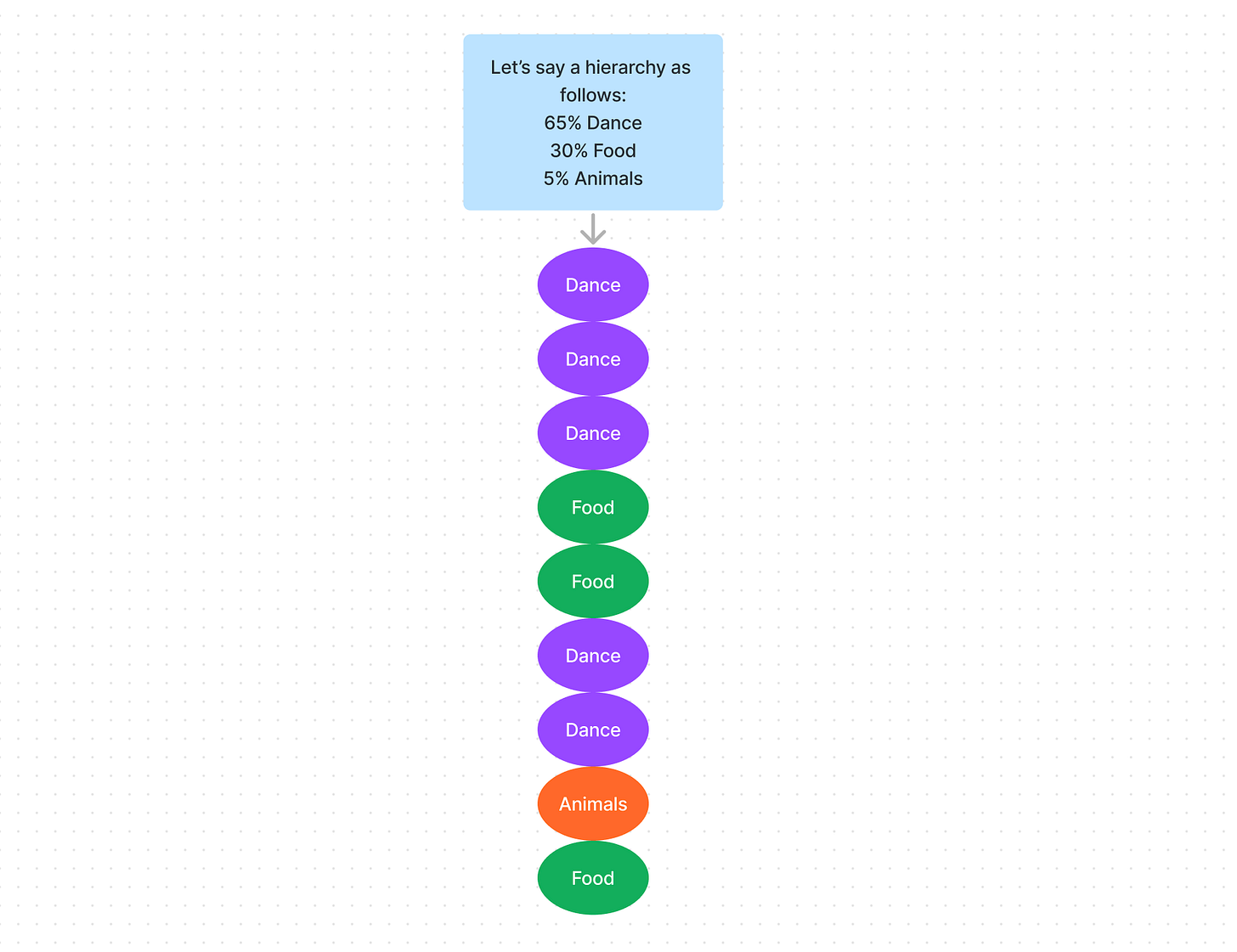Tiktok preference detection algorithm (simple)
I think there's a kind of Gen-Z chronological snobbery pointing at the folks sitting in front of the telly with the remote pinching that remote all day. But TikTok itself is a remote, a smart one!
We ditched the remote in favour of an algorithm, video reel apps don’t even have options, there’s only one way — Swipe up! Scrolling was considered on of the main actions on the web, that’s why the concept of endless scroll was created. The “Tinder “ pattern, often discussed in meetings where it brought a smirk from time to time has options: Swipe left or right! But this is one way all down!
Attention is the new measurement tool for tailoring content in a feed. I’m working on a prototype that will track the time spent on each video and determine your personal preferences like if you fav pets, dance or foody kind of person.
This works by timing your total seconds viewed and loop count for each video. It’s a stub, a quick experiment, because I think at this point tiktok uses a multitude of data pinpoints than we can imagine. But it shows how can we use a relatively simple (no-code) tool like Protopie to envision how the basic example works.
Detecting user preferences
Let’s start with defining a set of popular types of video. let’s presume the first set of 3 videos (for example sake) of each section in order to learn what a new user “is into” . This first batch is usually determined over an average by location preferences or just a trial set of random topics.
Animal videos and pet-related content
Dance and choreography videos
Food and cooking videos
If it looks familiar, it probably is. You may remember quizzes, the sort of games that would determine what kind of person you are. You know, those things that told you ‘what is your spirit animal?’ questionnaires like Myers–Briggs 16 personalities and what house of Harry Potter you belong? (I really did work for a harry potter app!)
A (simple) algorithm is a quiz in which you don’t find out the result, but you get content tailored after your results.
The Red Herring
Generally, most content breaks the pattern and adds something like “a red herring” to the feed. For example, go on the Instagram discovery/search tab and you will see cat videos (if that’s what you are into) for example, the squares will be populated mostly with cat and other animal pictures and videos, however at some point it will feature something totally out of context
This is because users tend to go on what I call trances that would switch over time. Adding an option to switch the context and obviously track it removes the possibility for “boredom” to take place.
Boredom is the enemy of switching to other apps or mediums, an app should be enough interesting to allow the trance or what people are momentarily “into” to happen on the app itself.
Once preferences are detected, the focus is to ‘test’ if content switching is likely to happen, so from time to time we throw a ‘red herring’ into the feed (like in this case video with ‘Animals")
Conclusions
This is just a snippet, a visual interpretation of a ‘if then then that’ rules. But on an app we have plenty of interesting variables like part of the day, how preferences evolve over time, play counts, liked/saved content, backend analytics like similar content and trends, among others.
Tailoring would be a must in almost every application, regardless we’re talking about content itself or even the displacement of the interface, moulting dynamically over how people feedback on using the product.


